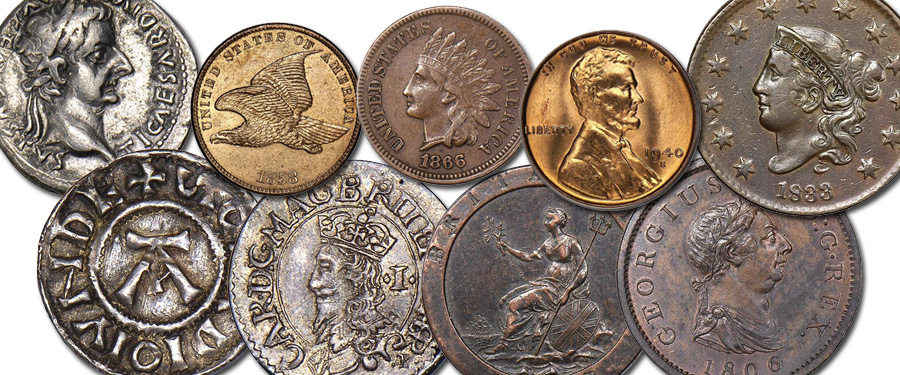
Dear Avid: I know that numismatists tend to only use "cent" or "one-cent piece" for the United States’ smallest current denomination. But the general population is much more prone to use the word "penny." I presume that this goes back to our roots in England, but is there any actual basis for using that term?
Answer: Thanks for the neat question, and now here’s a penny for your thoughts. When the ancient Romans first brought their brand of civilization to the British Isles, their habits and money system tagged along. The silver denarius was a small denomination, working class coinage and circulated in one form or another throughout much of the Empire. As with so many words over the millennia the pronunciation of denarius eventually became penny among Britain’s English-speaking populace (“den” and “pen” do rhyme). When the colonists first came to what would become the United States, barter was an acceptable business medium owing to the lack of coins in circulation. This lack of small change was with us for the first couple of centuries here in North America, and much of the circulating coinage was British or Spanish with a good mix of any country’s coins that held any acceptable value. Most available were the halfpennies and pennies of the Mother country, England, and these large coppers circulated well into the mid-1800s alongside our own coinage after 1793. The big British pennies were an everyday part of life and it was only natural for our own large copper cents to become “pennies” in our common vernacular. Old habits die hard – witness the “two bits” name for a quarter, for instance – and we will probably be hearing old saws such as “a penny saved is a penny earned” forever in the good old United States of America, even though our coins clearly say “ONE CENT.”





